Alive Water
The Facts About Drinking Bottled Water
There is no second opinion that drinking enough water is good for our bodily functions and overall health. It is a gift of nature, and we have a physical and spiritual connection with water. More than 70% of the human body is made up of water and each of our body cells needs it to carry on its duties. Our brain cells, kidneys, lungs, heart, stomach, and skin all work at their best because of the water content in our body. Knowing this, if we still compromise on our daily water intake, we are, to be honest, compromising on our health.
Just take the example of our skin. Lack of water can ruin our natural skin elasticity and may lead to premature skin aging. Not only this, there is a consensus amongst the dermatologists that dehydration can reduce your skin glow and clog your pores to form acne. Cystic acne and pimples are something that is the concern of our major adult population.
Other common issues resulting from dehydration are sluggish bowel functions, fatigue, dry mouth, and obesity.
But drinking water should not be the only objective. The quality of water that we consume matters too. Diseases such as Diarrhea are commonly associated with drinking contaminated water. Not only this, drinking such water may lead to life-threatening conditions such as kidney failure, hepatitis, cholera, typhoid, or even cancer. It is essential to mention that immunocompromised people, children under the age of five, and older adults are more vulnerable to water-borne diseases.
Therefore, It’s pertinent that we develop an understanding of some basic
questions?
- Are we drinking enough water?
- What is the source of our water?
- How the water we drink is treated, and what impact can it leave on our bodies?
But is just contaminated water harmful to our bodies? The answer is, No. Sometimes treated water, labeled and marketed as the purest form of water and sold by big multinationals brands, can become a long-term disaster. One such example is the rising trend of consuming bottled water.

What is Bottled Water?
Bottled water is the packed form of drinking water that may or may not be carbonated. Bottled water first made its way to the market, where it was used for therapeutic purposes. However, the bottles or containers were not environmentally friendly (just like today).
Sources of Bottled Water
The bottled water comes from a variety of sources and is of various types. Its origin can be groundwater from a well or a protected spring. Bottled water can also be obtained from a public water supply. According to the Minnesota department of health, bottled water includes the sources from where we get the ordinary tap water. In fact, we get more than half of bottled water from tap water. However, the water companies enhance or change the feature of waters a bit, and you are ready to pay a good price for that.
Common Types of Bottled Water
The carbonated water is usually called sparkling water due to a “fizz” in it. The water without the addition of carbonation is known as still water.
The type of bottled water that we know as mineral water is the one that has dissolved minerals and salt in it. Contrary to this, all the mineral content is removed in distilled water to make the water feel tasteless.
How are Water Bottles Made?
Generally, bottled water is packed in bottles made up of PET (Polyethylene Terephthalate) or glass and is available in different sizes worldwide.
Why is Bottled Water so Popular?
The popularity of bottled water can be estimated from the fact that the global bottled water market is growing at a CAGR of 6.1% during the forecast period (2021 – 2026). In 2020, 15 billion gallons of bottled water were sold only in the United States, with a per capita consumption of roughly 45.2 gallons in the United States.
In Canada, bottled water’s per capita consumption stood at 72.3 liters in 2018, increasing 34 percent since 2010. This figure is estimated to increase slightly to 72.9 liters in 2022.
Canada has 20% of the world’s total freshwater resources. From this, it is easy for Canadians to assume that they have got a sufficient supply of clean and fresh water. But still, buying bottled water is a part of their regular groceries.
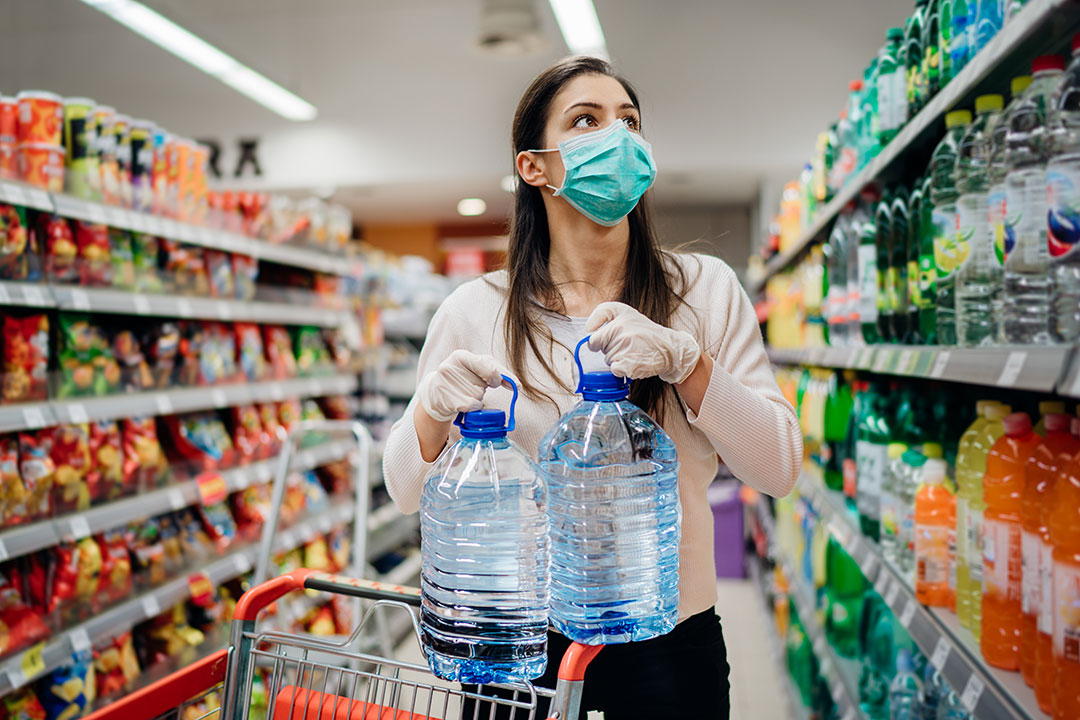
Why is this happening? Why bottled water is so popular, especially in a country where people have a relatively better standard of living. Do they have excessive resources to spend on? The reality is that bottled water is marketed so that people have started considering it more convenient, tastier, and safer than tap water.
Another point where the big water brands target their potential customers is representing it as a substitute for sugary drinks and controlling obesity.
Another primary reason that has been figured out in 2009 of the rise of bottled water is a Gallup Poll that announced that ‘fear of tap water’ is leading to a massive increase in sales.
Why Is Bottled Water Bad For The Environment?
Let’s understand this by stating the simple but straightforward words of Robert Englund:
“I’m scared by the enormous amount of bottled water being consumed today, instead of people drinking filtered tap water. Did you know that nearly 90 percent of those single-use plastic bottles are not recycled and wind up in landfills where it takes thousands of years for the plastic to decompose?”
According to the research report, the global bottled water market was estimated at USD 230 Billion in 2019 and is expected to reach USD 400 Billion by 2026. This means that you are getting this natural gift of God at a price and that someone is making a lot of money in the name of safety and purity.
However, there is clear evidence that bottled water can cause huge damage to our environment.
Bottled Water is a Source of Pollution
Plastic water bottles are causing pollution in a worse manner than we may think of. According to Harvard University, the entire life cycle of bottled water uses fossil fuels and contributes to global warming and pollution.
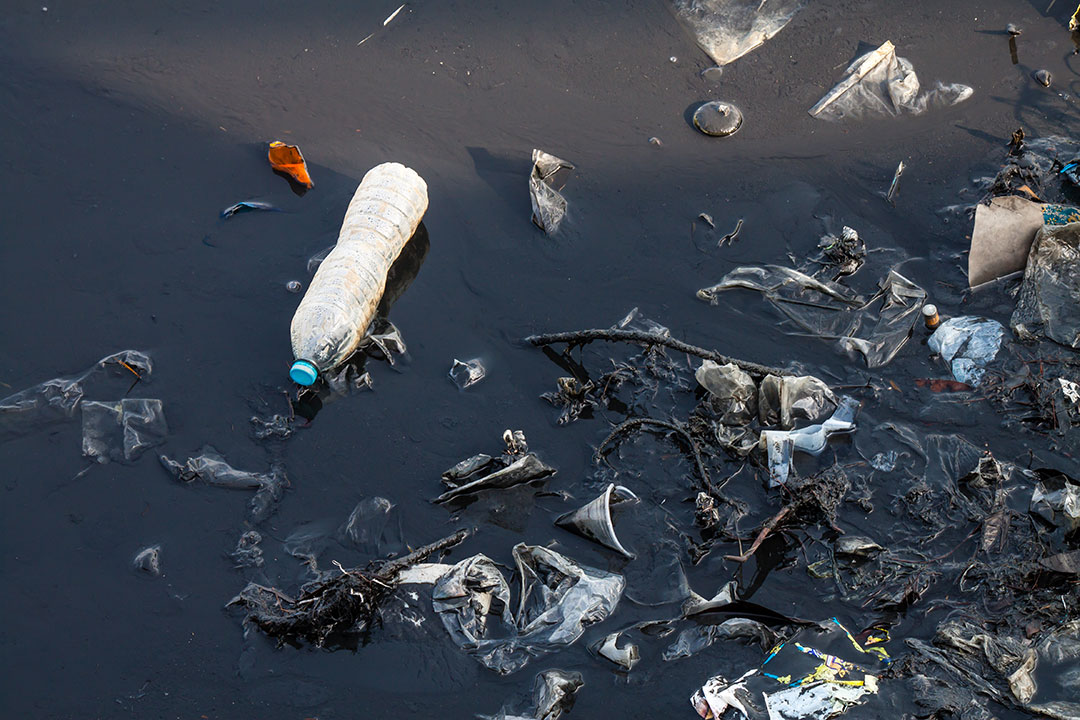
The Material used in Manufacturing plastic bottles is harmful
Firstly, the material used in making plastic water bottles is PET, which stands for polyethylene terephthalate. This material generates more toxic emissions in the form of nickel, ethylbenzene, ethylene oxide, benzene than manufacturing glass. In fact, producing plastic bottles causes 100 times the harmful emissions to air and water than making the same size bottle out of glass.
It is pertinent to mention that plastic is a material that doesn’t biodegrade well. It can take up to 450 years to decompose and remain floating on your oceans or fill up space somewhere in the ground.
When these bottles break, they can release toxic chemicals into the environment, such as BPA and phthalate. These substances can be absorbed in soil and harm the groundwater, which is our ultimate source of drinking, bathing, or cooking. No matter how much you treat it later, research suggests that some harmful substances remain there in the water.
Even if purified to 100%, the idea of water memory is still there. Every substance that remains in contact with water leaves its traces in water, though not chemically proven. The disturbed structure of molecules can negatively affect us.
The Process of Manufacturing Plastic Bottles is Hazardous
Secondly, the manufacturing process of these plastic bottles is such that it can increase the carbon levels in the atmosphere to a considerable extent. Imagine that producing just a pound of PET (which is used in making plastic bottles) can generate up to three pounds of carbon dioxide. Imagine the disaster when these water bottles are continuously in demand and are manufactured in huge quantities around the globe.
Wastage of Precious Resources
Thirdly, manufacturing plastic water bottles requires heating renewable energy sources, which leads to carbon emission, and on the other hand, wastes the planet’s precious fuels.
According to Harvard University, it’s an energy-intensive process, and around 17 million barrels of oil are needed just to fulfill America’s annual demand for bottled water. This makes the filling 1/4 of the bottle with oil. The total energy required in bottled water production is 5.6-10.2 MJ per liter, compared to tap water, which requires 0.005 MJ per liter in treatment and distribution.
Another factor is that these plastic water bottles are transported nationally and internationally that consume fuel and emit greenhouse gases.
Disaster for Aquatic Life
The adverse impact of plastic bottles is not limited to this. If it makes its way to our ocean, rivers, and lakes, it can impact the whole food chain. It can also be fatal for marine life since sea animals mistakenly consume this plastic material.
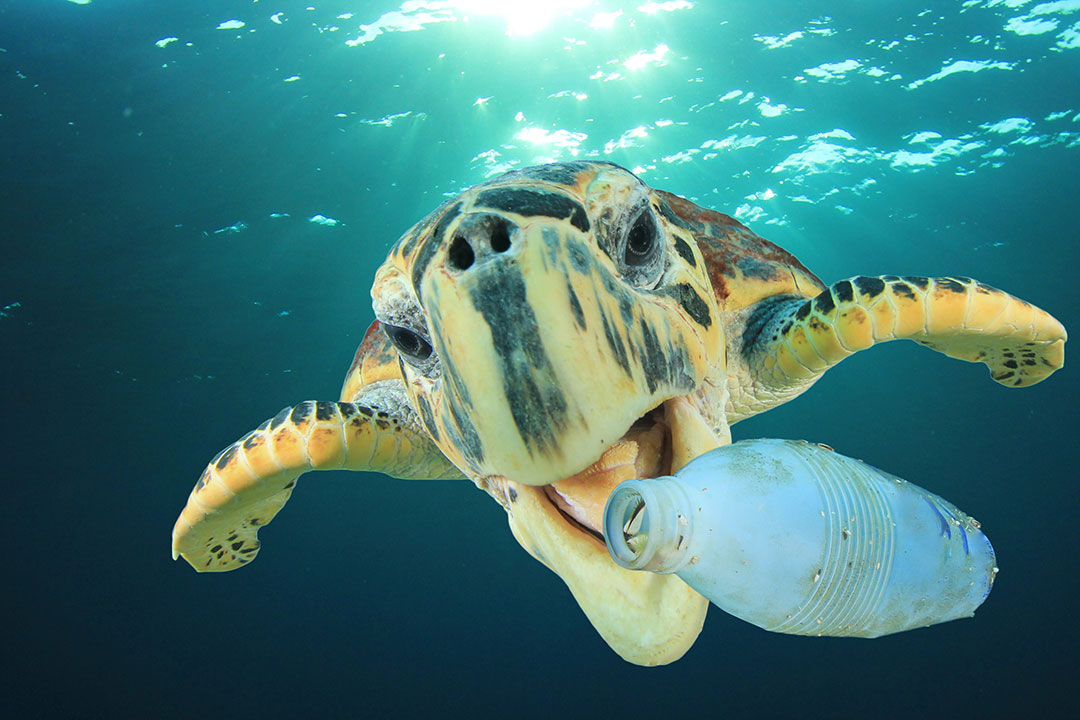
According to the studies, by 2050, the ocean will contain more plastic by weight than fish. The MacArthur report presents an astonishing fact that there will be 850-950 million tonnes of ocean plastic by 2050, versus total fish stocks of 812-899 million tonnes.
Are you going to eat fish, which contains plastic? This plastic is no one else’s contribution to marine life but our spending on bottled water which is about 3,000 percent more expensive per gallon than tap water.
No or Less Recycling
Only in Canada, 3 million tonnes of plastic waste is thrown away, only 9% of which is recycled. These plastics including bottles are polluting lakes, rivers, and oceans which can generate microplastics in the water.
The U.S. recycling rate for plastic is 23 percent, meaning that only about one in every four or five bottles only finds another use. The rest of the three are polluting the environment or killing wildlife.
Why Should You Stop Buying Bottled Water?
Bottled Water Consumes Vast Amount of Water
Water scarcity is becoming increasingly common all around the world. It is said that “the wars of the future will be fought over water, not oil.” In this scenario, we can’t afford to buy bottled water, wasting drinkable water in huge amounts and contaminating our lakes and oceans. You will be astonished to know that it takes three times the amount of water to make a bottle than it does to fill it.
A large volume of water is required for cooling the plastic products, which undergoes a vigorous heating process called extrusion.
At the time when we need to talk about strategies for conserving water, we are wasting it.
It’s Just the Ordinary Water
Thanks to the wonders of marketing, merely with a bit of filtration, ordinary tap water is sold as the purest water. We are fooled with advertising, which makes us perceive it better in taste and safety.
According to the Beverage Marketing Association, a trade body, nearly 50% of all bottled water sold in the United States is just purified tap water. The standards for the botted and ordinary tap water are not much different. Many experts believe that tap water is more tightly regulated than bottled water. The fluoride content that is essential for human teeth and helps avoid tooth decay is present in tap water and is removed from bottled water.
Dangerous Chemicals
Human and environmental health is everyone’s topmost priority, but bottled water that you buy for good health contains chemicals. These chemicals can leach into the water.
A study conducted in Canada in 2006 figured out that these chemicals turn higher in concentration if the water takes longer to sit in the bottle. This chemical concentration can cause nausea, dizziness and even lead to depression. If this water is transported to a far-off area, for example, from Europe to Asia, there will be an antimony concentration in that water when somebody buys that water and drinks it.
Another study conducted in Amritsar used seventeen different brands of bottled water collected from various local retail shops. These bottles were analyzed for versatile physical and chemical parameters to assess their comparability with the recommended limits of the World Health Organization (WHO) and the United States Environmental Protection Agency (USEPA).
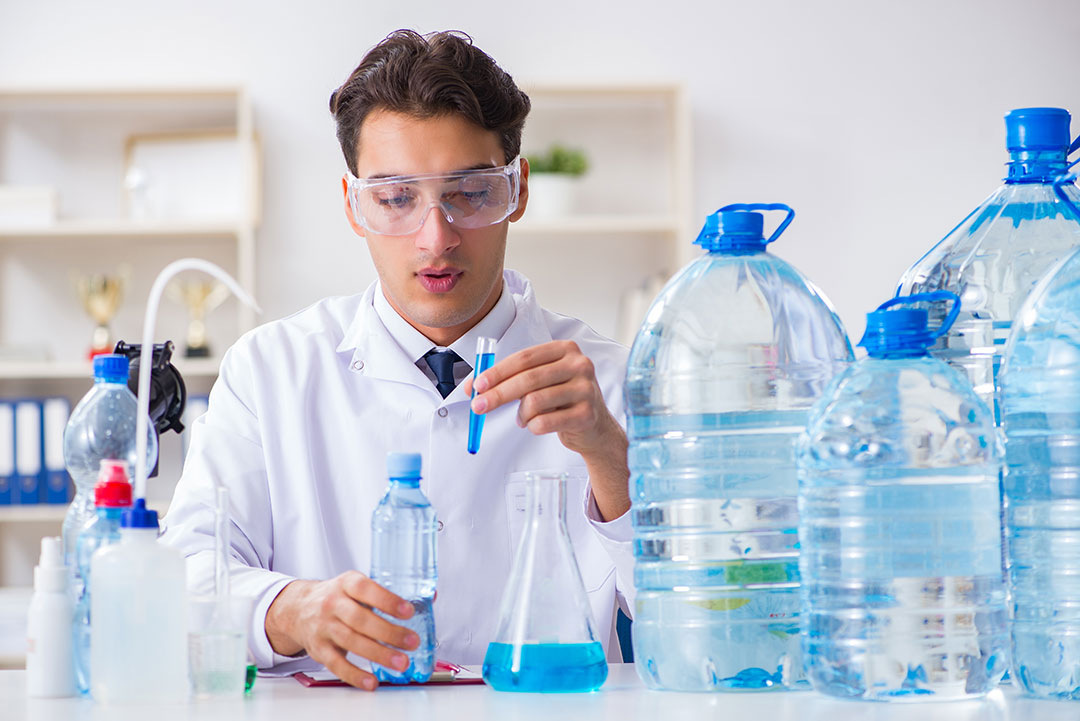
Surprisingly, most brands showed that water was deficient in essential minerals such as magnesium, potassium, and calcium. Samples also presented that the fluoride content was lesser than 0.5 mg/l, which necessitates additional fluoride sources for individuals who only consume bottled water. Another finding was that lead had been found in more significant amounts than the limit of 0.015 mg/l in seven out of 17 samples.
Another chemical associated with bottled water is BPA. BPA stands for bisphenol-A. It is an industrial chemical that has been used to manufacture plastics since the 1950s. These BPA Polycarbonate plastics are often used in containers that store food and beverages, such as water bottles.
BPA is an environmental estrogen that can actually destroy the natural balance of hormones in the body, particularly the thyroid hormone system, and may lead to breast cancer. There is also evidence of BPA’s negative impact on fetal development. If during pregnancy a woman consumes BPA, there is a risk of low birth weight, miscarriage, or other issues.
Another chemical called phthalates can adversely affect fertility in men along with diabetes, obesity, cognitive impairment, and language issues in children.
Why Is Tap Water A Better Option
According to Healthline, tap water is a better option because it hydrates just like bottled water but costs much less.

This means if you are getting well-treated tap water, you can use a good amount of it without having any worries of additional spending. If we start relying on bottled water, we will only be benefitting these bottled water brands.
Bottled water can only fulfill your body’s needs, whereas you also need pure water to treat your skin, wash your clothes, and garden your plants. You just can’t afford to get enough of this water for all-purpose. You need one solution that provides you cleaner, healthier, and safer water.
Tap water’s topmost benefit is that it doesn’t have a negative environmental impact. You won’t feel guilty about contributing to environmental pollution by adding plastic bottles to the trash.
If we successfully decline bottled water usage, we can help save aquatic life and water resources to a great extent. Also, the risks associated with these harmful plastic particles making their way to our bodies and causing health issues will be reduced significantly.
What is The Vortex Water Revitalizer™, and Why Do We Need It?
As said, ordinary tap water is safe and clean; however, we as consumers can make it even fresher, healthier, and safer with correct treatments.
One such treatment is The Vortex Water Revitalizer™ – an evolutionary water treatment solution that makes your ordinary tap water much more structured and fresh. Once installed, you will feel a significant improvement in the way you taste and experience the water.
Also, unlike bottled water which can only be used for drinking purposes, The Vortex Water Revitalizer™ will benefit your entire household. Any task or activity that involves water will be positively influenced.
The best part is that the system has zero emissions. It is not only an environmentally friendly product but also environmentally beneficial.
With The Vortex Water Revitalizer™, you can help overcome the severe damage caused to the environment due to urbanization. One prominent form of that damage is wastewater leaving the homes of billions of people around the globe. The Vortex Water Revitalizer™ breaks down sewage and wastewater more efficiently. Therefore the water which is leaving your home is of much better quality and less detrimental to our rivers, lakes, and oceans.
As far as the Installation is concerned, it is fast, simple, and non-permanent, delivering results instantaneously.
Learn more on the benefits of Revitalized Water to contribute to the better future.
End of Plastic Bottles
Naturally, treating your tap with eco-friendly treatments such as The Vortex Water Revitalizer™ will bring an end to the need for plastic water bottles. Plastic water bottles are one of the largest contributors to garbage in the world, polluting both our land and oceans. We can’t afford to ruin our limited resources on earth.
Conclusion
The above article logically proves that buying bottled water is not a wise decision if you are someone having great concern for the environment, your family’s health, and your well-being. In the case of bottled water, the drawbacks exceed the benefits.
You need to shift your tap water with a little bit of necessary treatment for a safer side. The Vortex Water Revitalizer™ technology is one of our greatest inventions, which can be highly cost-effective.
It is suggested that if we restrict our usage of plastic bottles as individuals and as an organization, we can see a massive transformation in lowering the burden carried by our rivers, lakes, and oceans.


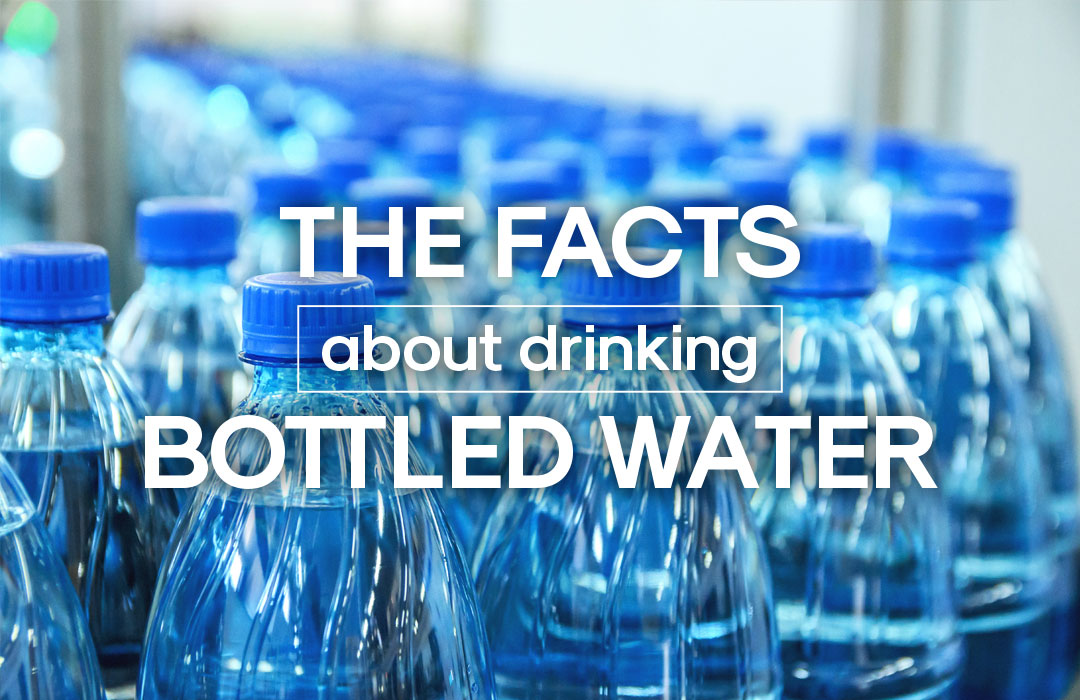
Related Blogs
Discover Water Like Never Before: Eric’s Feel-Good Story
Let’s face it, the marketplace is a jungle and finding products that don’t just make [...]
Feb
Viktor Schauberger Water Vortexer: The Evolution of Water Treatment
Every business has a story to tell – the tale of its inception and the [...]
2 Comments
Jun
How To Energize Water Daily?
We all know the benefits of consuming water; we read about the importance of drinking [...]
Oct
Are You Drinking Enough Water?
Water is an essential element for life. Life on earth or any other planet is [...]
Aug
From Dry to Radiant: How Vortex Water Revitalizer Transformed Your Skin and Life
We felt truly humbled reading Morgonn Vanmerlin’s personal journey with our Vortex Water Revitalizer. Hailing [...]
Jan
Water Experiment By Dr. Masaru Emoto
Dr. Emoto Believed, “Water is the mirror that can show us what we cannot see. [...]
15 Comments
Jul
Structured Water: Is It Worth the Hype?
Over the past few years, water and its benefits have taken the internet by storm. [...]
Aug
How do I filter my swimming pool water?
Finally, we’re leaving the cold months behind and in just a couple of weeks, summer [...]
Apr